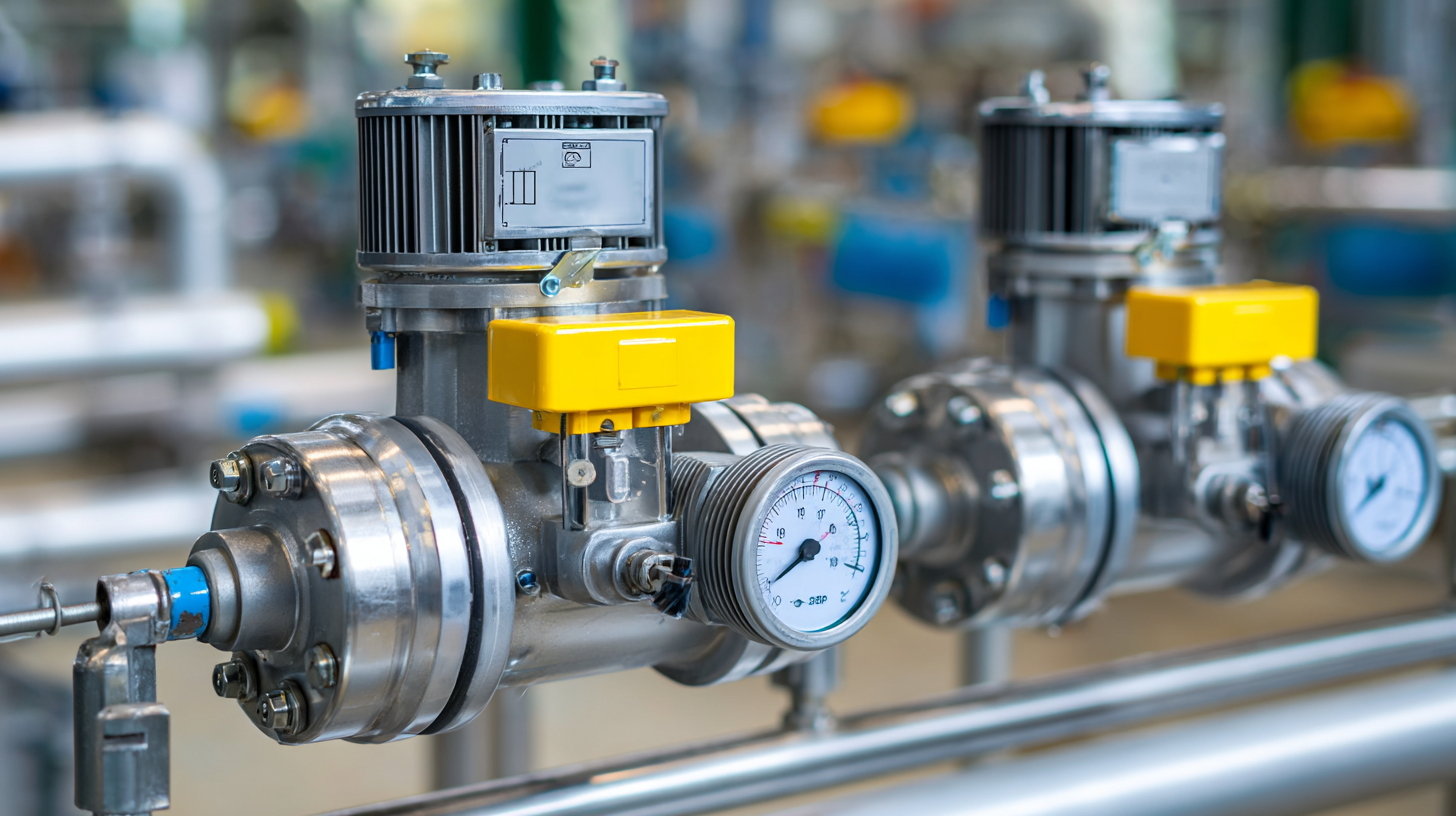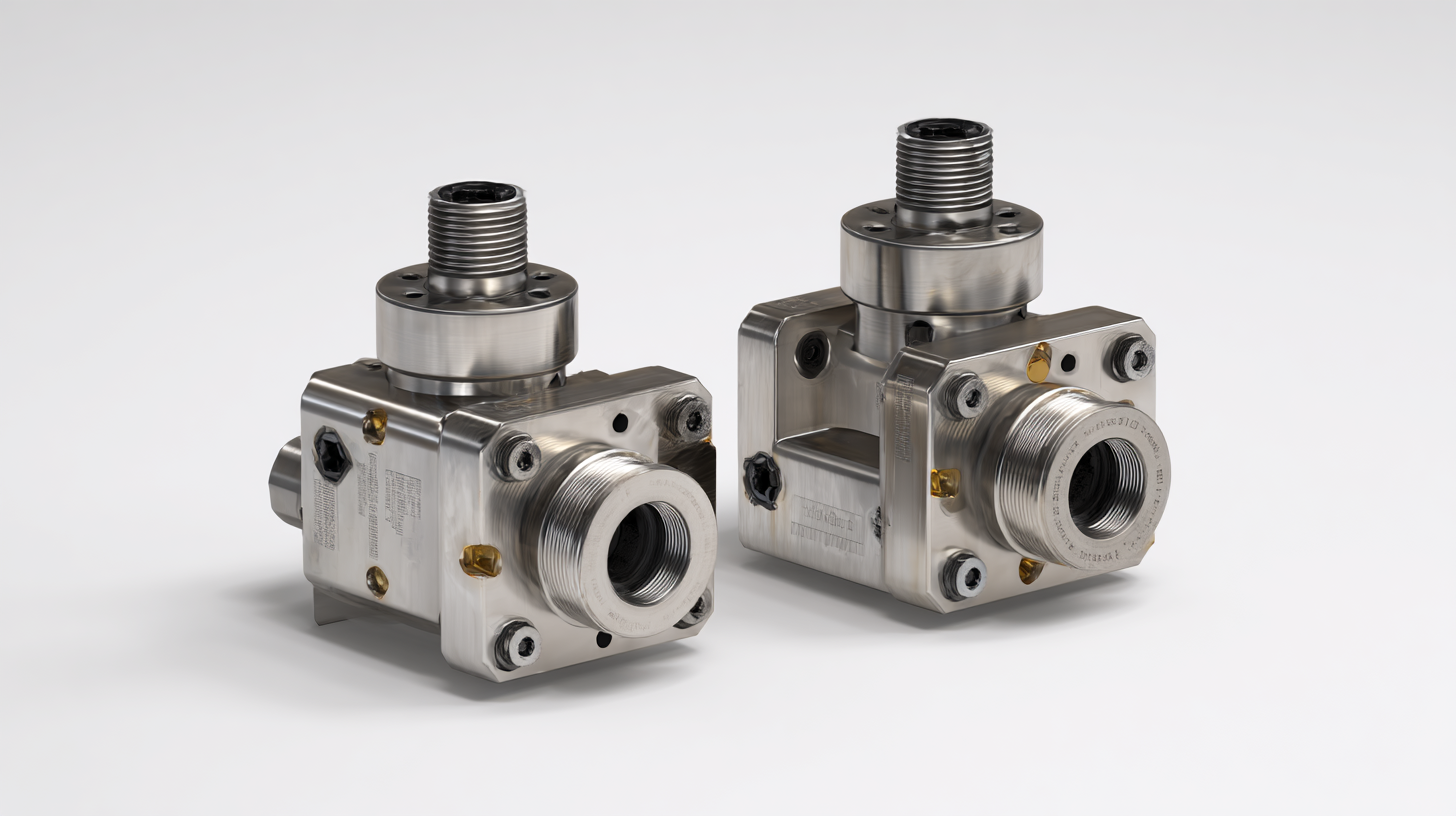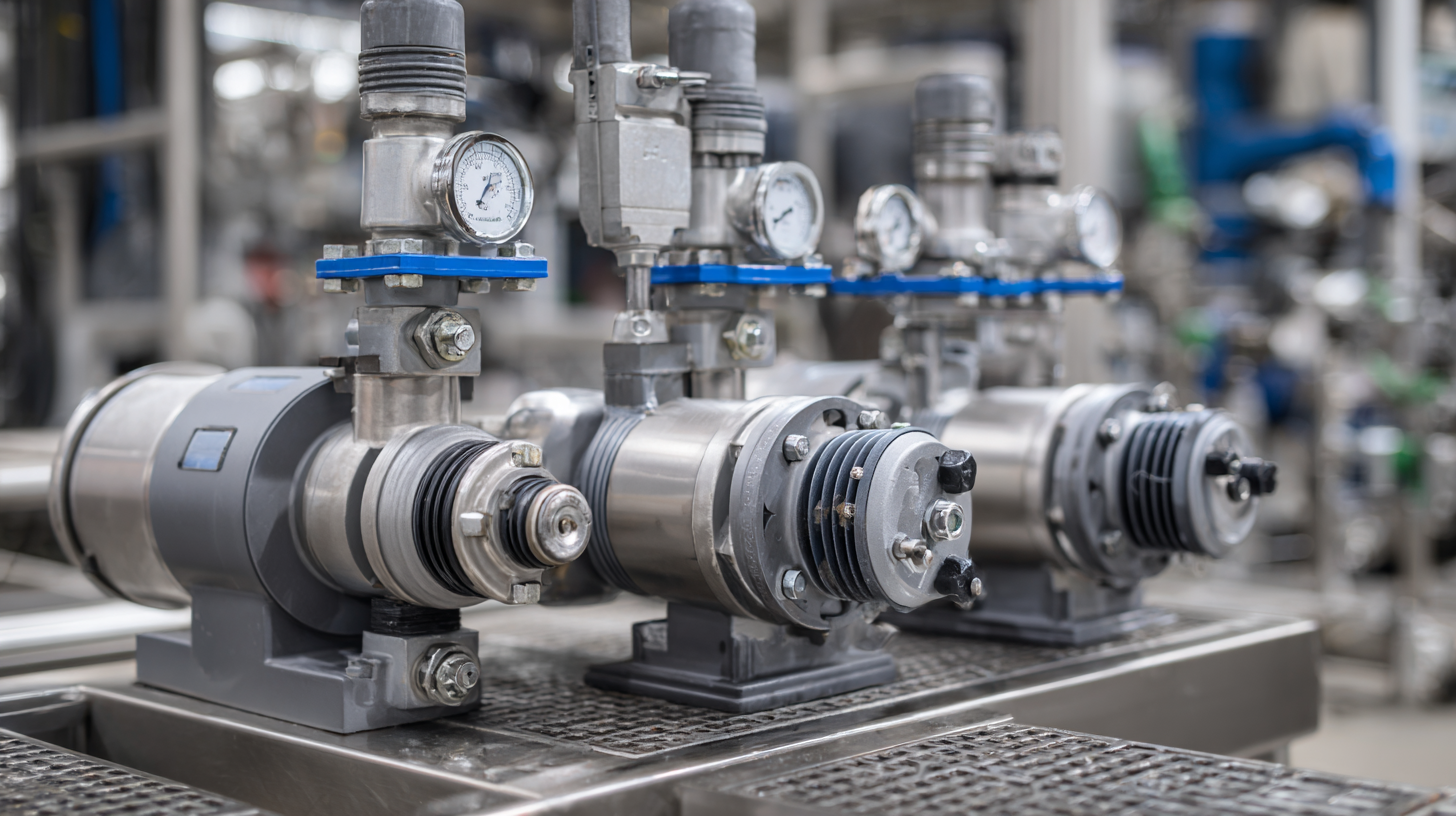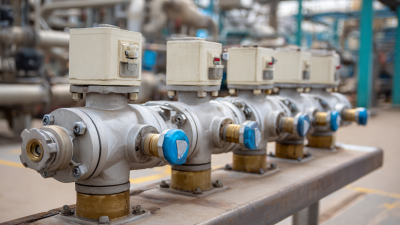Understanding the Benefits of Pilot Operated Check Valves in Fluid Control Systems
In recent years, the demand for efficient fluid control systems has significantly surged, driven by advancements in industrial automation and fluid management technologies. According to a report by MarketsandMarkets, the global fluid control market is projected to reach USD 40 billion by 2025, highlighting the critical need for reliable components. Among these components, pilot operated check valves (POCVs) have emerged as essential devices in enhancing system performance and safety. These valves not only prevent backflow but also allow for precise control of fluid flow under varying pressures, contributing to energy efficiency and optimizing operational costs. With an increasing number of applications in industries such as manufacturing, oil and gas, and water treatment, understanding the unique benefits of pilot operated check valves is imperative for engineers and decision-makers aiming to improve the reliability of their fluid control systems.

Types of Pilot Operated Check Valves and Their Mechanisms
Pilot operated check valves (POCVs) play a crucial role in fluid control systems, offering a variety of types designed to meet specific operational demands. Primarily, there are two common types: direct-acting and hydraulic or pilot-operated. Direct-acting check valves are ideal for low-flow applications, where they allow fluid to flow in one direction while preventing backflow. Conversely, hydraulic or pilot-operated check valves are favored in high-pressure systems due to their ability to maintain flow even under extreme conditions. According to a report by the Fluid Power Society, approximately 60% of hydraulic systems utilize pilot operated check valves due to their efficiency and reliability in managing flow control.
The mechanisms of pilot operated check valves are particularly noteworthy, as they utilize hydraulic pressure to control the opening and closing of the valve. When the pressure in the pilot line exceeds that of the system, the valve opens, allowing fluid to pass through. This design not only enhances operational efficiency but also minimizes the risk of system failures. Recent market analyses indicate that the global market for check valves is expected to grow at a CAGR of 5.3% from 2021 to 2026, highlighting the increasing adoption of POCVs in industrial applications. As industries continue to seek more reliable and efficient fluid control solutions, understanding the types and mechanisms of pilot operated check valves becomes essential for optimizing system performance.
Understanding the Benefits of Pilot Operated Check Valves in Fluid Control Systems - Types of Pilot Operated Check Valves and Their Mechanisms
| Type of Valve | Mechanism | Applications | Advantages |
|---|---|---|---|
| Pilot Operated Check Valve | Utilizes an external pilot signal to open or close the valve, allowing flow in one direction while preventing backflow. | Hydraulic systems, machine controls, and pneumatic applications. | Improved control over fluid flow and reduced risk of system failures. |
| Non-Return Valve | Closes automatically when fluid flow reverses, preventing backflow. | Water supply systems, HVAC systems. | Simplicity, reliability, and low maintenance requirements. |
| Pressure Control Valve | Maintains pressure by adjusting flow based on pilot pressure signals. | Industrial processes, chemical manufacturing. | Precision pressure control, increased system efficiency. |
| Flow Control Valve | Regulates flow rate through a pilot-based mechanism, allowing for smooth operation. | Irrigation systems, automotive cooling systems. | Enhanced flow management, energy savings. |
Key Advantages of Using Pilot Operated Check Valves
 Pilot operated check valves are essential components in fluid control systems, offering several key advantages that enhance system performance and efficiency. One primary benefit is their ability to maintain flow in one direction while preventing backflow. This feature is particularly important in applications where the protection of sensitive equipment from reverse flow is crucial. Additionally, pilot operated check valves can accommodate higher flow rates compared to standard check valves, making them suitable for high-demand environments.
Pilot operated check valves are essential components in fluid control systems, offering several key advantages that enhance system performance and efficiency. One primary benefit is their ability to maintain flow in one direction while preventing backflow. This feature is particularly important in applications where the protection of sensitive equipment from reverse flow is crucial. Additionally, pilot operated check valves can accommodate higher flow rates compared to standard check valves, making them suitable for high-demand environments.
Tips for selecting the right pilot operated check valve include considering the pressure differentials that will occur in your system. Ensure that the valve's pilot supply is adequately sized to respond effectively to fluctuations. Furthermore, regular maintenance checks can prevent wear and tear, ensuring longevity and reliable operation of the valves.
Another significant advantage is their ease of control. Pilot operated check valves can be opened and closed remotely, allowing for greater automation within fluid control systems. This capability simplifies operational processes and empowers users to manage flow with precision. When integrating these valves, always keep in mind the system's overall design to maximize efficiency and performance.
Applications of Pilot Operated Check Valves in Fluid Control Systems
Pilot operated check valves (POCVs) play a pivotal role in fluid control systems across various industries, including hydraulics, agriculture, and manufacturing. These valves allow fluid to flow in one direction while preventing backflow, thanks to their unique pilot control mechanism. According to a recent report by MarketsandMarkets, the global hydraulic valve market is expected to reach $19.9 billion by 2025, highlighting the growing importance of efficient fluid control solutions like POCVs.
 One notable application of pilot operated check valves is in mobile equipment, such as construction machinery, where they enhance safety and efficiency. By automatically closing under loss of pressure, POCVs prevent unintended movement of loads, making operations significantly safer. In industrial automation, POCVs help maintain precise control over fluid direction, which is essential for processes like material handling and robotics. The International Fluid Power Society (IFPS) emphasizes that integrating POCVs into these systems can improve energy efficiency by up to 30%.
One notable application of pilot operated check valves is in mobile equipment, such as construction machinery, where they enhance safety and efficiency. By automatically closing under loss of pressure, POCVs prevent unintended movement of loads, making operations significantly safer. In industrial automation, POCVs help maintain precise control over fluid direction, which is essential for processes like material handling and robotics. The International Fluid Power Society (IFPS) emphasizes that integrating POCVs into these systems can improve energy efficiency by up to 30%.
Tips for selecting POCVs include considering the pressure drop across the valve, ensuring compatibility with your fluid type, and assessing the required response time for pilot operation. These factors can greatly influence the performance and longevity of the valve in your system. Always consult with a professional to evaluate the specific needs of your application to maximize the benefits of pilot operated check valves.
Comparison of Pilot Operated Check Valves with Other Valve Types
Pilot operated check valves (POCVs) are increasingly recognized for their role in fluid control systems, particularly for their advantages over traditional valve types. In general, conventional check valves rely on a simple mechanical mechanism to allow flow in one direction and prevent backflow. However, POCVs utilize pilot pressure to control their operation, offering a more sophisticated solution that can significantly enhance system efficiency.
According to a report from the International Fluid Power Society, systems equipped with POCVs can experience flow control improvements of up to 30% compared to standard check valves. This is largely due to their ability to modulate flow based on system pressure, allowing for smoother operation and reduced pressure drops. Furthermore, when compared to solenoid or electrically actuated valves, POCVs offer lower energy consumption and require fewer components, resulting in a more compact and cost-effective system.
In addition, studies indicate that POCVs contribute to minimizing hydraulic shock and pressure spikes, which are critical in maintaining the integrity of fluid control systems. The Engineering Toolbox highlights that using POCVs can enhance system reliability and longevity by reducing wear and tear on other components. Thus, when evaluating fluid control solutions, the pilot operated check valve stands out as a superior choice in many applications.
Maintenance Considerations for Pilot Operated Check Valves
Pilot operated check valves are essential components in fluid control systems, but their maintenance requires careful consideration to ensure optimal performance. Regular inspection is crucial; these valves should be checked for any signs of wear or damage. The pilot system, which helps regulate flow, is particularly sensitive and must be kept clean from debris that could impede functionality. A maintenance schedule should include cleaning the pilot line and inspecting the valve seat to prevent leakage or loss of pressure.
Additionally, operators should be aware of the specific requirements for lubrication and the environment in which the valves operate. Harsh conditions can lead to faster deterioration; therefore, using appropriate materials and coatings can enhance longevity. It is also important to monitor response times during operation, as delays may indicate the need for immediate maintenance or part replacement. By adopting a proactive maintenance approach, the reliability and efficiency of pilot operated check valves can be significantly improved, ensuring that fluid control systems function smoothly and effectively.
Benefits of Pilot Operated Check Valves in Fluid Control Systems
Related Posts
-

7 Best Pressure Reducing Valves You Should Consider for Optimal Performance
-

What is the Future of Automated Valves in Modern Industries
-

Essential Checklist for Selecting the Right Hydraulic Check Valves for Your Applications
-

5 Essential Tips for Choosing the Right Hydraulic Units for Your Business
-

How to Choose the Right Hydraulic Check Valve for Your System
-

How to Optimize Your System with Automated Valves for Maximum Efficiency
 skip to Main Content
skip to Main Content
